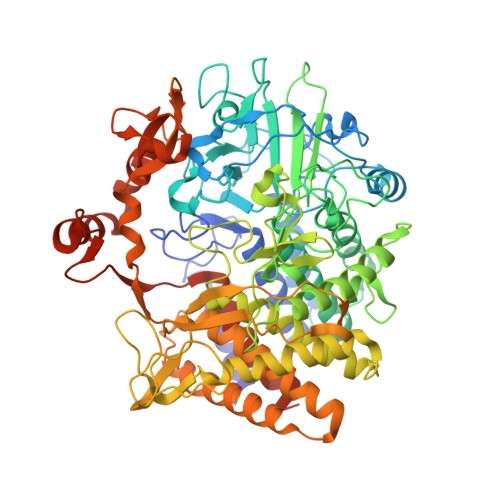Strategies to reduce end-product inhibition in family 48 glycoside hydrolases.
Chen, M., Bu, L., Alahuhta, M., Brunecky, R., Xu, Q., Lunin, V.V., Brady, J.W., Crowley, M.F., Himmel, M.E., Bomble, Y.J.(2016) Proteins 84: 295-304
- PubMed: 26572060
- DOI: https://doi.org/10.1002/prot.24965
- Primary Citation of Related Structures:
5BV9 - PubMed Abstract:
Family 48 cellobiohydrolases are some of the most abundant glycoside hydrolases in nature. They are able to degrade cellulosic biomass and therefore serve as good enzyme candidates for biofuel production. Family 48 cellulases hydrolyze cellulose chains via a processive mechanism, and produce end products composed primarily of cellobiose as well as other cellooligomers (dp ≤ 4). The challenge of utilizing cellulases in biofuel production lies in their extremely slow turnover rate. A factor contributing to the low enzyme activity is suggested to be product binding to enzyme and the resulting performance inhibition. In this study, we quantitatively evaluated the product inhibitory effect of four family 48 glycoside hydrolases using molecular dynamics simulations and product expulsion free-energy calculations. We also suggested a series of single mutants of the four family 48 glycoside hydrolases with theoretically reduced level of product inhibition. The theoretical calculations provide a guide for future experimental studies designed to produce mutant cellulases with enhanced activity.
Organizational Affiliation:
Department of Food Science, Cornell University, Ithaca, New York.





















